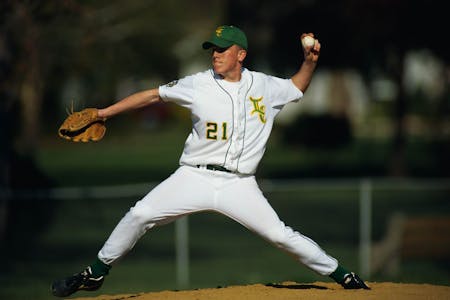
Throwing injuries greatly impact the health of the shoulder and elbow and when these joints are affected, a player's longevity in the game is directly affected. Throwing injuries need not only pertain to baseball, football, track and field sports and basketball but actually pertain to almost all sports because a lot of motions also use the exact same body mechanics and acceleration as a throw (the serve in volleyball and tennis for example!)
Following are throwing injuries that Stride Strong Physical Therapists see often in athletes:
- Overtraining in athletes, be it that they throwing too frequently or with too much acceleration, who suffer from strains and tears of the shoulder – particularly the rotator cuff, labrum and bicep tendon.
- An acute event during gameplay – such as falling on an outstretched arm or their shoulder, or unintended contact and forces on the outstretched throwing arm.
- Repetitive strain to the ulna collateral ligament and medial epicondyle of the elbow.
There are intrinsic and extrinsic factors related to sports injuries. Intrinsic factors are the athlete's musculoskeletal issues. Any deficits in these can drastically affect the forces put on the shoulder the elbow joints during throwing. They can be:
- Poor form in throwing. Common things we see is underutilization of core and leg muscles in generation forces for a throw.
- Scapular weakness and scapular instability. The humerus (upper arm) is not the only anatomical part that raises during a throw – the shoulder blade has to rotate 1/3 of the range as well and is able to produce a lot more power and stability to the moving humerus.
- Skeletal immaturity. Younger throwing athletes' bodies are still developing and joints a lot more laxed (loose and hypermobile) during this period of their lives. Pair this in with repetitive arm acceleration and the young athlete can develop long-term shoulder joint instability and be prone to dislocation/subluxation of the shoulder joint.
Extrinsic factors that affect sports injuries pertain to training schedules and the environment the athlete performs under. They can be:
- Frequency of throwing, in practice and in games.
- The absence of preseason screening for players of all ages.
- Presence of proper warm-up time before playing.
- How aggressive and how long a game lasts for.
- Whether the throwing athlete has offseason time to participate in another activity that does not stress the same joints and tissues in throwing. Playing a single sport year round can cause young athletes to develop poor flexibility and muscles weakness due to using the same muscles over and over.
No matter the sport, Stride Strong Physical Therapists considers all of these factors when rehabbing throwing athletes. We provide movement analysis, activity modification advice along with targeted stabilization exercises and manual therapy to heal structures correctly and prevent re-injury.
Throwing Facts:
- Only 9% of all baseball injuries require surgery to heal properly
- "Little Leaguer's Elbow" (medial apophysitis) is a common condition in young baseball players who do a lot of throwing. The flexor tendon on the inside of the elbow joint can get strained and become painful and swollen. If a child experiences elbow pain, restricted range of motion or locking at the elbow joint they should stop throwing before the ligament tears or the bone fractures.
- Understanding pitch count in baseball players is paramount to reducing injuries. Pitch count is the number of pitches a player throws that is dependent on their age. Below is a pitch count guideline.
- 8-10 years 50 pitches/game max 75 pitches/week max
- 11-12 years 75 pitches/game max 100 pitches/week max
- 13-14 years 75 pitches/game max 125 pitches/week max
- 15-16 years 109 pitches/game max 2 games/week max
- 17-18 years 105 pitches/game max 2 games/week max
- About 1/3 of all baseball players report having shoulder or elbow pain at any given time.
- There are dependable and backed-by-research injury prevention programs developed for throwing athletes. One such example is the Oslo Sports Trauma Research Center Shoulder Injury Programme, an exercise programme that increases glenohumeral internal rotation, external rotation strength and scapular strength and stability. It also addresses the kinetic chain of throwing and the importance of thoracic mobility during a throw. Captains and coaches should adopt this programme on their athletes three times a week for best results in injury prevention.
Call to schedule your visit now!
Request an AppointmentSources:
- Andersson SH et al. Preventing overuse shoulder injuries among throwing athletes: a cluster-randomised controlled trial in 660 elite handball players. Br J Sports Med. 2017 Jul;51(14):1073-1080. doi: 10.1136/bjsports-2016-096226. Epub 2016 Jun 16.
- Knapik DM et al. Youth Baseball Coach Awareness of Pitch Count Guidelines and Overuse Throwing InjuriesRemains Deficient.
- J Pediatr Orthop. 2018 Nov/Dec;38(10):e623-e628. doi: 10.1097/BPO.0000000000001244.
